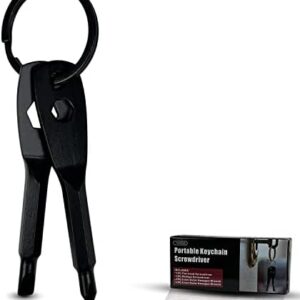.jpg)
No one’s necessarily comfortable while slogging through bumper-to-bumper traffic. But when you deal with back pain, extended car rides aren’t just an annoyance—they can be downright hellish. It’s a reality that Olivia Sabedra-Buck knows well thanks to years of chronic lower-back issues from a herniated disc. A sharp jabbing sensation used to radiate down to the tops of her thighs shortly after she’d buckle up. “When it was at its worst, even driving 10 or 15 minutes sucked,” the 36-year-old marketing manager from Santa Barbara, California, tells SELF.
If you, too, have back pain that gets worse when you’re confined to a vehicle, we’ve got some hopeful news: A few small changes before, during, and after your drive can make rides less grueling—and none of them involve convincing someone else to get behind the wheel or staying home entirely. Here are some of the most important changes to make, according to experts.
1. Plan your trip carefully to reduce physical—and mental—stress.
Sitting, in general, isn’t great for your body—and that’s especially true if you have chronic back pain or are recovering from an injury, like a strained muscle from lifting weights at the gym. That’s because it can put stress on your spine and surrounding muscles when you do it for prolonged periods. Minimizing the amount of time you spend in the vehicle might help, Arya N. Shamie, MD, a professor of orthopedic surgery and neurosurgery at UCLA School of Medicine, tells SELF. That may mean scoping out your route on Google Maps before you set out to avoid trafficky spots, even if it’s the same drive you do every day. If your commute is the issue, perhaps you try leaving earlier to dodge a freeway gridlock and set up in a nearby coffee shop to kill some time before heading out.
A less chaotic trip might also cut back on mental stress, which can make your back feel even worse, Dr. Shamie explains. Create a playlist of calming tunes, download a chill but entertaining podcast, keep a comforting snack or drink nearby (thermos of chamomile tea, anyone?), and turn the AC or heat to a pleasant temp. Even just taking a few slow, deep breaths (eyes still open, obviously!) at a stoplight can help. “If you’re tense in your arms and gritting your teeth, you’re also tensing up your back muscles,” Dr. Shamie says. “It’s really important for your whole body to be relaxed.” Try the 4-7-8 technique if you’re short on time: Inhale through your nose for four counts, then hold your breath for seven counts. Finally, release the air and breathe out for eight counts.
2. Set up your seat ergonomically.
When you hunch over your steering wheel—or sit in any position that overly flexes your spine—you can strain your lower back muscles and add pressure to your vertebrae, Dr. Shamie says. Instead, situate yourself so your back follows the gentle, S-shaped curve of a healthy spine.
The best way to do this? Get your seat in the right spot. Move it close enough to the steering wheel and pedals so that you’re not overly extending your arms or feet to reach them, and ensure there’s roughly 10 inches of space between your chest and the wheel. Try to keep it low enough so your elbows and shoulders stay relaxed as you grip the wheel. (Placing your hands at nine o’clock and three o’clock is best.) Your upper thigh should always be resting on the cushion beneath you (meaning, you shouldn’t be too far forward on the seat), and your hips should be in line with (or slightly higher) than your knees. “If your thighs aren’t supported, you’re putting more stress on your lower back,” Dr. Shamie says.
3. Support your spine with a pillow.
Speaking of posture: Placing a small pillow right above your tailbone can help you maintain a natural spinal curve and stop you from slouching. “It puts pressure on your back above your waistline and pushes your belly forward a bit, which is a better posture for driving,” Dante Implicito, MD, a spine specialist and chair of orthopedics at Hackensack University Hospital, tells SELF. “That’s a healthier posture when you’re driving.” You can find them from retailers like Amazon—this one or this one would likely get the job done—but in a pinch, Dr. Implicito says a rolled-up towel can do the trick. Some car seats have built-in lumbar cushions you can inflate or deflate, but those aren’t usually big enough to provide support, says Julie Sherry, PT, a physical therapist at UW Health.
4. Change positions whenever you can.
Make it a point to do small—but impactful—movements throughout the drive that’ll limit stress on your back and keep you from getting fatigued. For example, if you always lay your right arm on the middle console, shift it to the other side and drive with your opposite hand every 15 or 20 minutes. “You want a variety of postures so your muscle tissue isn’t stagnant and static,” Sherry says. Even a gentle twist of your torso while temporarily stopped is a good idea.





